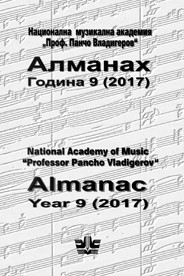Ранната хармония на Дебюси и на Шьонберг: отражение на различни традиции на преподаване?
Harmonic Practice in Debussy’s and Schoenberg’s Early Works: A Reflection of Divergent Scholastic Traditions?
Author(s): Violaine De LarminatSubject(s): History, Fine Arts / Performing Arts, Cultural history, Music
Published by: Издателство НМА „Проф. Панчо Владигеров”
Keywords: Schoenberg; Debussy; harmony textbooks and teaching traditions; relationship of thirds; Terzverwandtschaft; tonic function; median function; dominant function; chord progressions V – IV
Summary/Abstract: Hardly any other topic in music theory is as tradition-bound as that of harmony. The divergences in this matter between the Germanic and French traditions, and the resultant pedagogy in music schools and conservatories, are remarkable. For example, solely on the topic of modulation, we see that a) the German term “Terzverwandtschaft” has no French equivalent and b) in Germanic schools chromatic modulation is explained in relation to the tonic of the outgoing tonality, whereas in the French tradition it is seen as a special resolution of its dominant chord. Consequently, German and French harmonic analysis of this repertory split along these lines; a comparison of German articles about Debussy with the way his music is (mostly orally) analysed in France clearly shows this divergence. Is it possible then that the didactic methods themselves influenced composers and thus the development of music? Debussy and Schoenberg, who shared a common stylistic origin with Richard Wagner and the Post-Romantic composers, both threw open the doors to the musical aesthetics and languages of the 20th century, even if they led in different directions in France and Austria Already in their early works, the characteristics of Impressionism and the Second Viennese School were on clear display. In examining Schoenberg’s early Lieder (“7 Early Songs” through opus 6, written over the period 1894 – 1905), we can see that his compositional process was predominantly contrapuntal with its use of modulating chord progressions and non-harmonic tones. Similarly influenced by his own pedagogical context, Debussy’s “Mélodies” (“Ariettes oubliées”, “Chansons de Bilitis”, “Trois chansons de France”, “Fêtes galantes”, written over the period 1885 – 1904) illustrate his “acoustic” harmonic thinking in which primary importance lies in dominant harmonies with characteristic alterations and added tones. The work here presented will show that it is likely that the respective styles of both composers derived from the traditions and didactic conventions with which they were confronted and that these schools of thought influenced the later development of atonality through to the French musical aesthetics of the 1970s (i.e., musique spectrale, Grisey, Murail, Manoury, Levinas).
Journal: Алманах - Национална музикална академия „Проф. Панчо Владигеров“
- Issue Year: 2018
- Issue No: 9
- Page Range: 124-162
- Page Count: 39
- Language: Bulgarian

